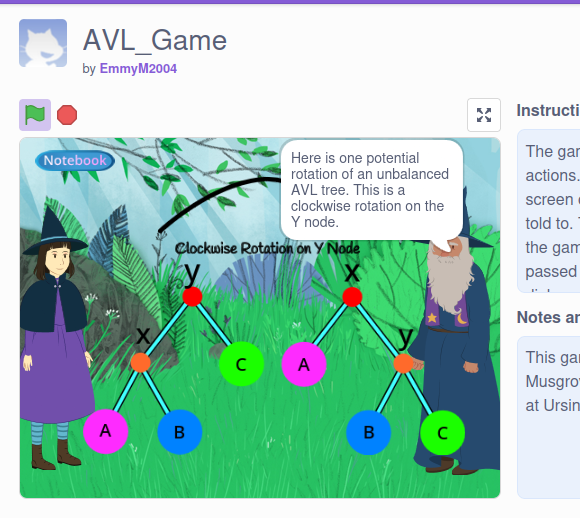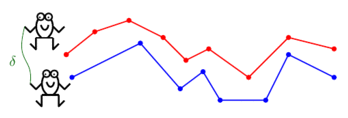CS 271: Data Structures And Algorithms
Ursinus College, Fall 2022
As stated on the main page, there are two options for a final assessment, and I will provide more details about each one below
Option 1: Mock Coding Interview
A live coding interview, typically an hour in length, is a pretty standard part of a software engineering job these days. The focus is always on implementing algorithms, and this class will have covered the vast majority of the topics that are considered "fair game" for such an interview. The web site interviewing.io provides an excellent resource for this. You should spend some time looking at some of the sample interviews on this page to get an idea of how these go.
The interview we do will be somewhere between 30 and 45 minutes. I'll provide a rubric here as we get closer, but in essence, it is OK for you to make mistakes as you go along, as long as you recognize them and work to fix them. As a rule of thumb, the more talking you do about your thought process, the better.
Option 2: Geometric Algorithm Multimedia Expo
The annual Symposium on Computational Geometry (SOCG) always has a multimedia expo, where people are invited to submit short movies/skits/apps to make an algorithm "come alive." The focus of this conference is on "geometric algorithms," so basically geometry meets CS 271. Algorithms in this area have applications to computer graphics, robotics, video game design, city planning, map making, and beyond.
In this year's call, the official instructions are as follows:
The submission should be related to computational geometry, broadly interpreted, but is otherwise unrestricted: for example, it can illustrate a (new or existing) concept, technique or algorithm from computational geometry, it can explain an application of computational geometry, it can be meant for educational purposes or for entertainment purposes, and so on. The form of media is broad, including algorithm animations, interactive software and games. To showcase the media after the event, for submissions that are not videos, creation of an accompanying webpage or video is encouraged (but not required).
Unlike the coding interview, students may actually work in groups on this project!. Students who go into enough depth with this work may submit their work to next year's conference! This would be particularly good for anyone who's considering applying to grad school. You can a history of all submissions since the 1990s on computational-geometry.org under Multimedia web proceedings
Videos/Skits
Below is an example from CS 371 spring 2022 which made it all the way to the geometry conference! Click here to see an app I made with it (which could have been a final project in its own right)
Web Applets
For those who want to make an applet, I'd highly recommend making a web demo using Javascript. For those who have not used Javascript, it is basically like Java meets Python, so it shouldn't take too long to learn. Click here to view an example by me, Kacey La (CS 271 Fall 2022), and Jose Arbelo (CS 371 Spring 2022) that we just presented SOCG 2024 last summer. Kacey and I also made a video about this here:
Here is another amazing example from a group last year that talked about the well-separated pairs decomposition
And here's a screenshot from a group that went all out with a game in Scratch last year (Click here to play the game):

Here are a few more examples from recent conferences
- Spiroplot app
- Dots and polygons
- MatchTheNet
- Geometric Models for Musical Audio Data
- Scissors Congruence (cutting any two polygons with the same area into pieces that can be re-arranged into each other)
- Geometric Spanner Algorithms Visualization
- Interactive Geometric Algorithm Visualization in A Browser
- Quickest Visibility Map Visualization
Ideas of Topics
Anything that combines skills from this class with geometry is fair game, but below are a few topics that would be great for this project
3D KD Trees
There are ideas similar to binary search trees that work for geometric objects. One such data structure, the KD-Tree, is a tree that can be used to quickly find points in a point set. There are some nice interactive demos of KD trees for 2D point sets, such as this one, but I am not aware of any for 3D

|
| Picture of a 3D KD tree, courtesy of Wikimedia commons |
Dynamic Time Warping / Discrete Fréchet Distance
Dynamic time warping is an algorithm to align two time series that are warped. Click here for more information on this. In the past, it has been part of CS 271, but it got cut in favor of more graph algorithms.
Regardless, it might be neat to create a skit about dynamic time warping where two people have to hop along some trajectory while minimizing the sum of ropes that they use to connect each other.
There's also a problem known as the Discrete Fréchet Distance which is incredibly similar to DTW, but which tries to minimize the maximum distance between any two points on a warping path, rather than the sum of all distances. A "decision version" of this problem could be to choose a rope of a certain length and see if that rope is long enough for people to hold onto the two ends of that rope while jumping from one point to the next.
Below is a "frog hopping" animation of Discrete Fréchet distance, courtesy of Omrit Filtser

Linearithmic Approximations of Dynamic Time Warping
One of my favorite recent papers in computational geometry shows how it's possible to create an O(N log N) approximation algorithm for dynamic time warping. Click here to see this paper. There is C++ code here to do this (which I forked from the first author), but it might be nice to translate it into Python or Javascript to make it more usable. Below is a figure of this algorithm that I made using the C++ code:
K-Center Clustering And Greedy Permutations
There is a problem known as K-Center clustering that is stated as follow: given a set of N points X, find K points Y so that the maximum distance of each point in X to its closest point in Y is minimized. Unfortunately, this problem is NP-hard, which means we will probably not be able to find a polynomial time algorithm to solve it. However, there is a very simple 2-approximation known as a Greedy K-Center (sometimes "farthest points sampling") which can be computed in O(KN) time. The idea is very simple:
- Pick a random point x1 ∈ X
- for k = 2 to N
- Let xk be the point in X whose closest distance to the points chosen so far is maximized
- Let λk-1 be this maximum distance (we'll use this in a moment)
There's another really nice property of a greedy permutation: if we place balls of radius λk-1 around the first k points chosen, then the union of these balls covers all points. Below is an example that I coded up in 2D:

Click here to view slides on why this is a 2-approximation of K-center clustering.
We can keep going to let K = N to come up with what's known as a Greedy Permutaiton of the entire dataset. Each prefix of length K is a 2-approximation of K-centers for all K, and it only takes O(N2) to compute all of them. In practice, though, we might want to do something even faster. A recent paper by Don Sheehy (the author of the textbook we're using) shows how to do this in O(N log Δ) time, where Δ is the ratio of the furthest distance to the smallest distance between all pairs of points. Click here to view this paper.
Students on this paper might try to create a Javascript app to implement the original greedy k-center, as well as Sheehy's version. They also might want to run some experiments comparing the two on real datasets.
Geometry Multimedia Grading Rubrid
| 65% | Technical refinement:
|
| 10% | Clarity: How clear is your video or app to a general audience that hasn't necessarily taken this class? |
| 15% | Aesthetics And Code Quality: If you made an app or a video, are they smooth and polished for the viewer / interactor? Is your code readable and in good style? |
| 10% | Making It Your Own: How much did you do to refine this project and to make it your own? Did you put any unique twists on it that weren't suggested by the instructor? |